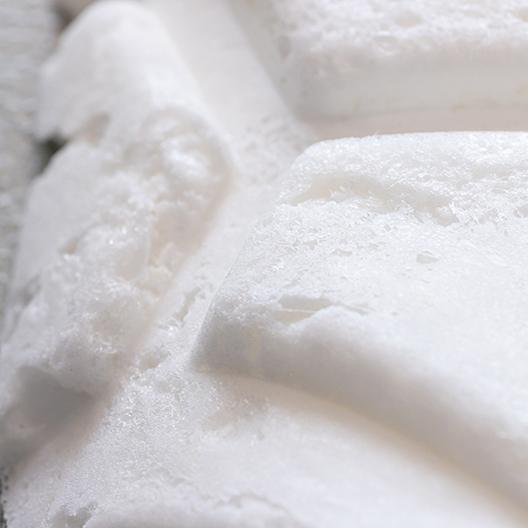
Coarse and open cell surface resulting in poor surface quality in polyurethane foam parts
Description:
Coarseness and/or open-cells reduce the quality and stability of the surface.
Affected Foam Parts:
Polyurethane foam parts made of flexible foam, high resilience foam, viscoelastic foam, acoustic foam, insulation foam and back foam are affected.
What causes it:
Insufficient deaeration during the moulding process or contamination of the foam with oils, water or silicones can be possible causes of poor surface quality.
In addition, unsuitable release agents as well as over- or underdosing of the release agents are frequently occurring triggers. A homogeneous foam structure is also not guaranteed with unsuitable mould temperatures or insufficient mixing in the mixing head. In addition, the content of catalysts and stabilisers in PU-foam plays a role – if these chemicals are not present in the right quantity, this can lead to large or open cells.
- Improper venting (or excess venting creating rapid flow of PU)
- Contamination with oils, water, silicones
- Wrong release agent type
- Over or under application of release agent
- Wrong mould temperature
- Insufficient mixing of the foam components in mixing head
- Improper catalyst/surfactant levels in polyurethane foam
- Insufficient dry time before dispensing polyurethane
Solutions:
To improve the quality of polyurethane foam parts, there must be sufficient ventilation and clean, dry and oil-free compressed air. If this is the case and yet coarse or open-cell foam parts are produced, it is important to check the selection and application of the release agent – only if the appropriate formulation is applied correctly is effective demoulding guaranteed.
- Check vents
- Try different release agent
- Optimize release agent application (check throughput, nozzle size, atomization pressure…)
- Check polyurethane process parameters
- Check contamination of compressed air (dry, oil free)
RELATED CASE STUDIES
© 2025 Chem‑Trend L.P. or Chem‑Trend affiliated company. All rights reserved.
Regional websites:
-
Argentina
-
Brasil
(Brazil) -
Canada
-
Česko
(Czech Republic) -
Deutschland
(Germany) -
España
(Spain) -
France
-
India
-
Italia
(Italy) -
México
-
România
(Romania) -
Polska
(Poland) -
United Kingdom
-
United States
-
Việt Nam
(Vietnam) -
CIS
-
中国
(China) -
한국
(South Korea) -
日本
(Japan)
Notice
You are about to exit this page. You will be redirected to the Chem‑Trend Global website where you’ll find your requested content in English.
Continue